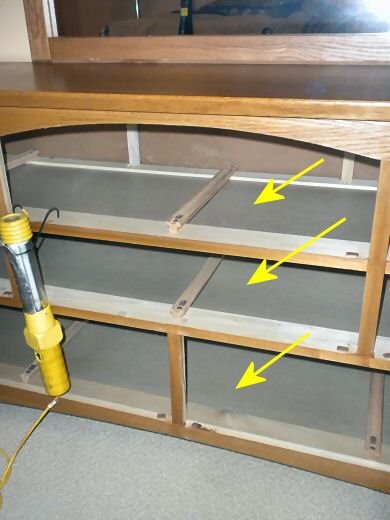TromboneAl
Give me a museum and I'll fill it. (Picasso) Give me a forum ...
- Joined
- Jun 30, 2006
- Messages
- 12,880
Hi Guys,
Here is Lena's dresser with the drawers removed:

The arrows point to thick cardboard that divides the space between the different levels of drawers.
That cardboard is just beginning to get a musty smell. I could paint it, but it would be easier just to remove it.
But before I do, I want to understand why it's there. Does it provide structural integrity? Does it prevent drawer contents from preventing a drawer from opening? Does it just make the dresser look like it's more expensive?
Thanks,
- Al
Here is Lena's dresser with the drawers removed:

The arrows point to thick cardboard that divides the space between the different levels of drawers.
That cardboard is just beginning to get a musty smell. I could paint it, but it would be easier just to remove it.
But before I do, I want to understand why it's there. Does it provide structural integrity? Does it prevent drawer contents from preventing a drawer from opening? Does it just make the dresser look like it's more expensive?
Thanks,
- Al
